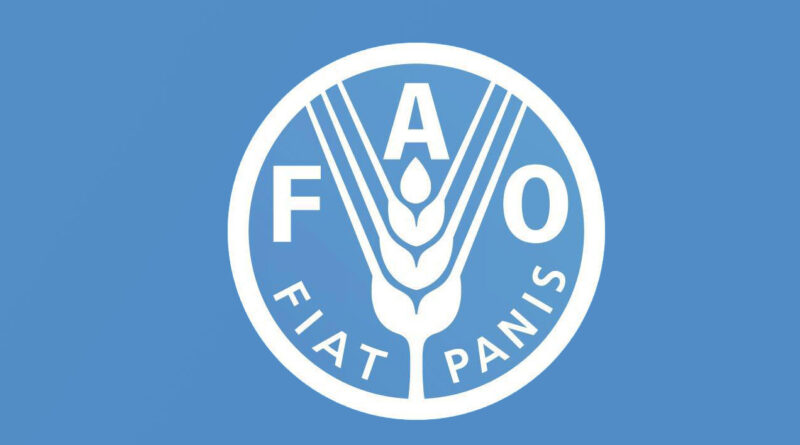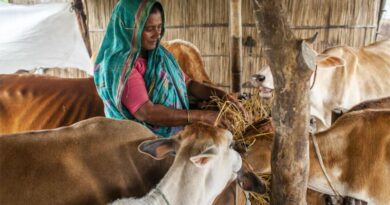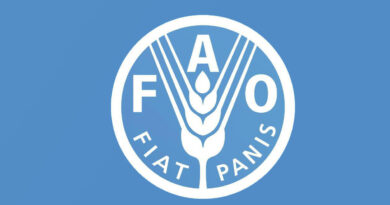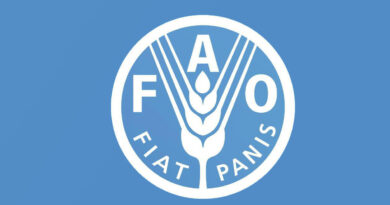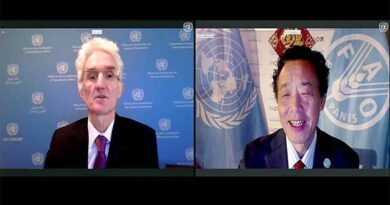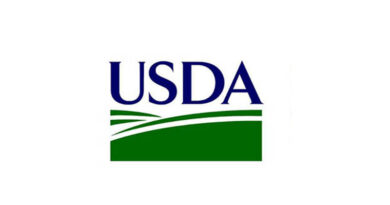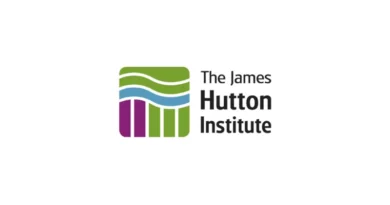FAO, WFP and EU discuss heading off food crises before they strike
14 October 2021, Rome: Acting before disasters strike is more efficient and helps save both lives and money, officials from the United Nations food agencies and the European Union said during a virtual meeting today designed to boost the role of anticipatory action as an urgently needed solution to food crises.
The Brussels Dialogue – “From reaction to prevention: anticipatory action against food crises” – brought together the heads of the Food and Agriculture Organization (FAO), the World Food Programme (WFP), and the European Union’s Humanitarian Aid operations. The high-level session was followed by panel discussions featuring partners’ experience at field level and the sharing of lessons learned.
Building on the outcomes of the high level event on anticipatory action convened by the UN Secretary-General, and the UN Food Systems Summit, the initiative reiterates the engagement of the founding members of The Global Network Against Food Crises, an alliance of humanitarian and development actors who seek to tackle the root causes of food crises and promote sustainable solutions.
After decades of decline, the number of people facing hunger has started rising again. Today there are 155 million people who are suffering from acute hunger and whose lives and livelihoods are at risk because they lack food. A further 41 million people risk falling into famine or famine-like conditions.
“These trends are showing us that our traditional, reactive approaches no longer fit our new reality,” said FAO Director-General QU Dongyu. We know that many food crises are preventable because they are recurring, Qu said. “And we know that investing in early warning systems pays off – not just for communities, but also for governments.”
The COVID-19 pandemic has added to existing threats like pests, plagues, conflict and climate change, compounding the global food crisis and adding to a sense of urgency.
At the same time, advances in technology and data collection have greatly improved experts’ ability to analyse risks and anticipate many disasters before they strike, making the shift from reaction to prevention an essential move forward, particularly during times of financial constraint.
“Food assistance needs are rising faster than the funding made available, making the current aid paradigm unsustainable in the longer-term,” said Janez Lenarcic, the EU Commissioner for Crisis Management. “We need to start acting on the risks of future food crises.”
Also Read: PHDCCI moots plan to combat GHG emissions in the agriculture sector in India
WFP said preventing food crises is cost-effective and requires joint efforts that should go beyond just natural hazard risks and include conflict risks as well.
“We can’t sit back and wait. We already have the solutions. In the past couple of years, we have been preparing for the type of anticipatory action that is needed to address the challenges we’re facing in the future. But it’s time to invest to scale up these programs,” said WFP Executive Director David Beasley. “Every time you have to come in after the crisis hits, when roads are shut and infrastructure is down, it can cost at least twice as much.”
Anticipatory action in action
Anticipatory actions come in many shapes and sizes and are highly time-sensitive and connected to forecasts. They can range from cash transfers that allow people to protect themselves and their animals, to helping fishers store their boats and gear ahead of a storm, to backyard gardening kits that help families in war zones produce food closer to home ahead of spikes in conflict.
The Brussels Dialogue showcased convincing evidence of how anticipatory action works.
Participants heard about how FAO, the EU and local governments helped farmers in the Horn of Africa avoid more than $1.5 billion in losses to their crops and protect the food security of more than 36 million people by acting while desert locusts were still on their way. In Bangladesh, FAO, WFP and other partners acted early on warnings to protect people against rising floods, helped by the fastest CERF allocation in UN history. In the Sudan, an FAO-facilitated early warning system was triggered ahead of one particularly inadequate rainy season in Kassala. For every $1 invested, farming families saw a return of $6.7 in avoided losses and added benefits. And in Burundi, the EU and WFP are currently setting up an anticipatory action scheme that can be activated ahead of climatic shocks.
As governments and agencies increasingly realize the advantages in terms of efficiency and cost-effectiveness, the momentum on anticipatory action is gathering pace. Anticipatory action featured prominently in the new EU Communication on the EU’s humanitarian action, in the G7 Famine and Humanitarian Crises Compact, and in the discussions leading to the UN Food Systems Summit, as well as in ongoing efforts to combat climate change.
Making anticipatory action an integral part of humanitarian interventions requires bold policymaking, collective learning, partnership, and coordination between a range of broad and diverse actors, officials said.
A photographic exhibition showcasing anticipatory action will run until October 13 in Brussels’ Galerie de la Reine.

